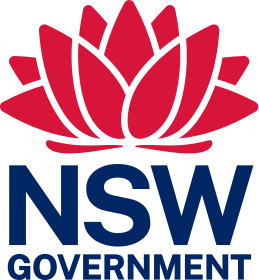Transport's Authorisation and Delegation to Councils
Transport’s (2025) Authorisation and Delegation Instrument authorises councils to use prescribed traffic control devices under s122 of the Road Transport Act 2013 and delegates Transport’s power under s115 of the Roads Act 1993 to regulate traffic for any purpose.
Prescribed traffic control devices are the kinds of signs, markings, and devices that are enforceable through the Road Rules 2014. Councils use them in traffic control work done under s87(3) of the Roads Act 1993. Councils can already regulate traffic to do this work (as well as for a number of other purposes specified in s115), but Transport’s delegation enables councils to also regulate traffic for events and activities such as markets and parades. Where council is regulating traffic for purposes listed in s115 (such as regular maintenance and road work), they are doing so using their own power to regulate traffic and do not need to use the (2025) Authorisation and Delegation Instrument or follow its conditions and processes.
The (2025) Authorisation and Delegation Instrument revokes and replaces both the (2011) Delegation to Councils and the (2023) Temporary Delegation to Councils No.2.
Local Transport Forum
One of the conditions of the (2025) Authorisation and Delegation Instrument is that councils establish a Local Transport Forum (formerly known as Local Traffic Committee). The Forum provides advice, technical review, and coordination of works and events. It does not vote, issue approvals, or make decisions.
The four formal members of the Local Transport Forum are representatives from each of Council, Transport, NSW Police, and the relevant State Member(s) of Parliament. Councils are welcome to invite others.
Some works must be referred to the Local Transport Forum for advice prior to implementation, such as those which restrict or prohibit passage for longer than 6 months and those which prevent or hinder safe public transport operations for more than 24 hours.
For most works, referral to the Local Transport Forum is optional at the discretion of council, provided the Forum is later given a record of any use of prescribed traffic control devices.
Proposals of less than 24 hours are not required to be referred to the Local Transport Forum at all, but some will require notification of Transport, Police, and/or bus operators.
Using the Instrument
The (2025) Authorisation and Delegation Instrument provides councils with flexibility and discretion in support of their role as local roads authorities, but Transport remains available to provide support and advice to councils. Please contact the Transport representative that attends your Local Transport Forum or email delegated_works@transport.nsw.gov.au.
There are a few conditions applied to the authorisation and delegation. They can be found in Schedule 4.
The Instrument, a detailed guide, and some supporting references are available below.
- (2025) Authorisation and Delegation Instrument – Prescribed Traffic Control Devices and Regulation of Traffic (PDF, 201.36 KB)
- A guide for councils using the (2025) Authorisation and Delegation Instrument (PDF, 447.45 KB)
- Factsheet: The 2025 Instrument – What is it? (PDF, 99.52 KB)
- Factsheet: The 2025 Instrument – What has changed? (PDF, 93.04 KB)
- Factsheet: Local Transport Forum – Function and responsibilities (PDF, 96.18 KB)
- Factsheet: Local Transport Forum – Referrals and review (PDF, 81.23 KB)
- Factsheet: Using the Instrument – Events and trials (PDF, 168.48 KB)
- Factsheet: Using the Instrument – Designing for public transport (PDF, 83.51 KB)
- Factsheet: Key terms (PDF, 100.84 KB)
- Factsheet: Information for Terms of Reference (PDF, 73.21 KB)
- Practitioner Checklists (PDF, 116.79 KB)
- Worked examples (PDF, 3.43 MB)
Links and tools
NSW Design of Roads and Streets Manual (DORAS)
A practical ‘how-to’ manual providing context-specific design advice and technical detail to improve roads and streets throughout NSW. Includes a library of design solutions containing dozens of examples of treatments successfully installed across NSW.
Movement and Place framework
A range of guides and practical references to support practitioners and evaluators in applying a Movement and Place approach.
Guide and resources for active transport
A collection of guides and tools useful for designing and planning streets and places to support active transport.
Road classifications
Information (including mapping) relating to the classification of roads across NSW.
Transport Standards Portal
Transport for NSW’s database for technical and asset management standards.
Traffic Signs Register
Database of standard signs used in NSW for regulating, warning, informing, and guiding road users. Refer here for indication of whether use of a sign is restricted under Transport’s prescribed traffic control device authorisation.
Bus Route Map
Bus services are a critical consideration on local roads. This map below helps identify public bus services across NSW. It also contains Local Government Area boundaries, road classifications, and some other useful details such as bus lanes, clearways, and railway stations.
Please note that the underlying map datasets are large and may contain errors and duplication. Users should always check against on-site conditions.
